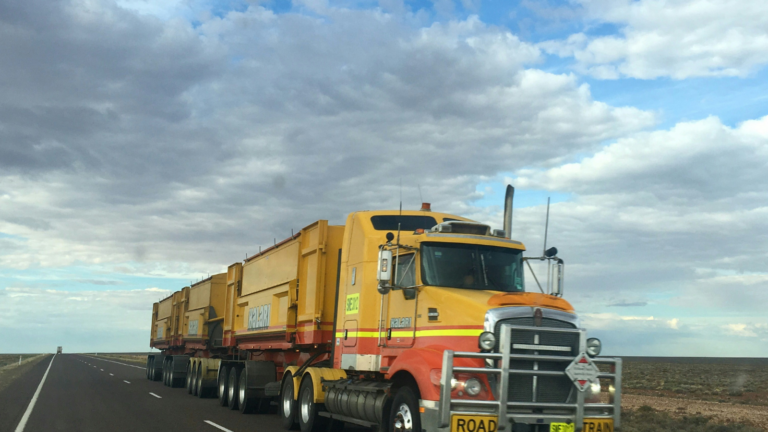How To Track A Truck Dispatcher’s Activity?

The growth rate of the trucking industry has accelerated significantly in recent years. Millions of people are working in the trucking industry in the US only, according to the Bureau of Labor Statistics. It makes the role of truck dispatcher vitally important in the logistics and supply chain management industry.
The success of a trucking company is based on the fast shipping of goods. Truck dispatchers are responsible for optimizing all steps in the dispatching process, from scheduling and delivering the products to the customer’s doorstep. Real-time dispatcher activity monitoring is made simple with desktop monitoring programs like Wolfeye.
This article explains how using Wolfeye to track dispatcher activity can optimize the truck dispatching process.
What is Truck Dispatching?
The essential back-end labor that keeps cargo moving smoothly is truck dispatching. It entails carefully organizing, arranging, and supervising the truck transportation of goods from one place to another.
Dispatchers not only direct trucks but also optimize resources and guarantee on-time delivery. They take into account variables like driver schedules, fuel economy, and vehicle maintenance to design the most efficient and economical transportation system feasible.
What Are The Main Responsibilities of a Truck Dispatcher in Freight Logistics?

The responsibilities of a truck dispatcher can vary based on the size of the company.
In smaller businesses, dispatchers typically are responsible for a number of tasks. They work as order execution specialists making sure deliveries go smoothly. They also act as procurement specialists and purchase cargo on behalf of the business.
Moreover, truck dispatchers act as logistics planners and create effective vehicle routes. They assume responsibility for keeping up with customer queries. They track the fleet and keep records of all dispatching activities.
To make it simple, their work can be divided into five categories:
- Trading -Purchasing cargo spaces
- Bookkeeping – Keeping records
- Planning – Creating Routes
- Procurement – Buying places for goods
- Customer service – Ensuring customer satisfaction
Their role is important enough to earn them earnings from the company’s cut oftentimes.
Why is it Important to Track Truck Dispatcher Activities?

Monitoring the activities of a truck dispatcher is important for the efficiency of the process and pinpointing areas for improvement. Decisions a dispatcher makes reflect in the metrics of a business in the real world such as customer satisfaction, on-time deliveries, optimized route optimization, and cost saving.
Analyzing the tracking data creates opportunities for specialized training for staff to enhance their skills. A prime example is providing advanced routing techniques to a dispatcher who finds it difficult to navigate crowded areas.
The main goal of tracking is to understand how the work of a dispatcher affects the overall performance of the company. However, micromanagement should not be the purpose of tracking, and employees should be able to exercise their legal rights to privacy.
How Does Wolfeye Track Truck Dispatcher’s Activity?
Wolfeye is a software for remote desktop monitoring. It lets users manage and remotely operate PCs or servers from another device. It is useful software to manage remote teams and make sure the workflow is smooth.
Employers can get real-time updates on project status or the day-to-day activity of employees.
Wolfeye can act as a truck dispatcher software and track dispatcher’s activity remotely owing to its peculiar features:
Real Time Tracking (GPS)
Robust tracking technologies from the basis of real-time monitoring. GPS devices are mounted on all dispatching trucks, which provide data about vehicle location.
GPS trackers can be integrated with Wolfeye and it can produce a virtual data map on main servers showing exact locations of vehicles in the fleet.
Tracking Weather Conditions
According to estimates from the US Department of Transportation (DOT), weather delays cost the trucking industry billions of dollars every year. Vehicles that drive long distances are primarily susceptible to harsh weather shifts while traveling.
Truck dispatchers can use telematics solutions for proactive travel planning to counter weather problems. Wolfeye, after integration with live radars, can give real time insights into weather forecasts affecting the entire fleet service and route planning.
Route Optimization
Ineffective routes have the potential to create a domino effect of problems for the trucking industry. Waste of fuel caused by opting for crowded routes increases expenses, customers become agitated by late deliveries, and drivers who wait for hours in traffic jams burn out.
Using Wolfeye, truck dispatchers can identify the problems by route analysis and make real time adjustments to the schedules of drivers.
Analytical Reports
Based on the data tracked by Wolfeye, it generates infographics and detailed reports to analyze the tracking procedures. The reports are then forwarded to executives of businesses who evaluate the performance of truck dispatchers.
Single Source of Communication
Truck dispatchers are responsible for carrying out smooth communications with all stakeholders involved.
It can be difficult to manage different modes of communication; Wolfeye acts as a unified communication channel that connects truck drivers, clients, and company owners.
Why Should You Prefer Wolfeye for Tracking Dispatcher’s Activity?
Wolfeye is an easy-to-use software. It facilitates employee activity monitoring. It provides useful data for operations, sales, and customer service department improvement in addition to tracking dispatcher activities among other benefits.
Reduced Cost
Effective route planning using the data obtained from Wolfeye saves the company money over time by removing the need for additional vehicles and drivers.
Enhanced Efficiency
Real time monitoring ensures the timely delivery of goods and tracks the performance of drivers, increasing their productivity. It also gives the executives the ability to track the overall performance for development.
Satisfied Customers
Orders placed by customers are trackable. Delivery times are reduced as drivers expedite deliveries when they are on watch, increasing customer satisfaction.
Dispatchers can maintain constant communication with customers by providing precise truck locations and estimated delivery times. It creates an environment of trust and confidence between the company and the customer.
Data-driven Decision Making
The continuous flow of information from real time surveillance offers insightful information for future planning in the trucking industry.
Dispatchers identify the areas of improvement and optimize resource allocation and dispatch strategies by examining the previous patterns.
Conclusion
Wolfeye is an effective tracking tool that is used to track dispatcher’s activities as well as to make sure operations run smoothly, which increases profits for companies. For the trucking industry, Wolfeye is an investment rather than a cost.